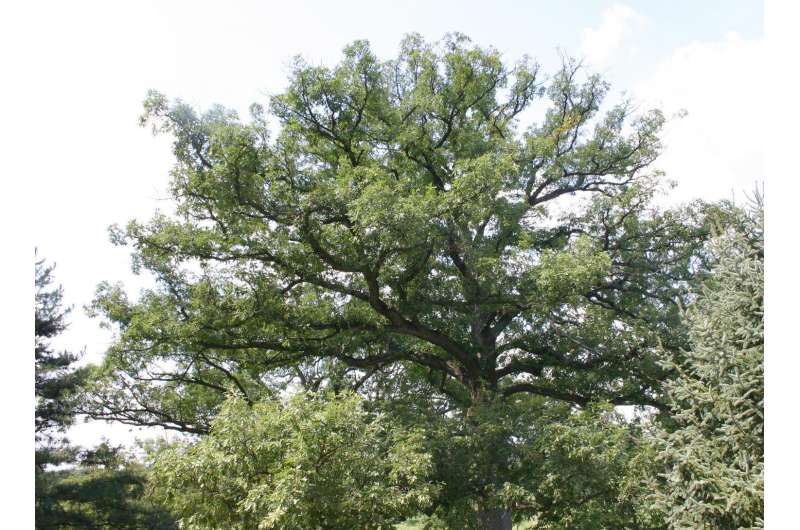Solving the mystery of the white oak

Research published this week in Proceedings of the Royal Society B: Biological Sciences solves a mystery that has long shrouded our understanding of white oaks: where did they come from? The approximately 125 white oak species in the Americas and 25 in Eurasia—including the massive bur oak of American prairies and savannas, the valley oak of California and the eponymous white oak of eastern North American forests—are important in forests and savannas throughout much of the northern hemisphere. Yet, despite their economic and ecological importance, not much was known about the evolutionary history of the white oak group until now.
This paper, co-authored by Andrew Hipp of The Morton Arboretum and Paul Manos and John McVay of Duke University, reveals for the first time that Europe and east Asia have eastern North America to thank for their white oaks. Coupling genomic data with fossil records and novel analytical methods, the research suggests that the Eurasian white oaks arose from a North American ancestor that migrated to Europe, perhaps by way of the North Atlantic land bridge. This is a story that has long been hidden by ancient hybridization among the Eurasian white oaks. The research implements new analytical tools to tease apart hybridization from evolutionary history to tell the full white oak story.
The study, funded by a collaborative four-year National Science Foundation grant to five institutions led by The Morton Arboretum, also shows that two oak species found on opposite ends of the globe, the Armenian oak (Quercus pontica) found in the Caucasus mountains and Sadler's oak (Quercus sadleriana) of California and Oregon, are each other's closest relatives. These species, the authors argue, are the last remnants of a widespread white oak lineage that stretched at least from Europe to the Pacific Northwest, of which all are extinct except for these two species.
"Understanding even the most basic questions—how many oak species are there? Where do they live?—rests on our understanding of oak evolution," said study co-author Andrew Hipp of The Morton Arboretum. "This is the first paper to conclusively separate the role of gene flow and divergence to recover a holistic portrait of the white oak tree of life. It is a crucial step toward understanding why white oaks became so important to the ecology of temperate forests and savannas in the northern hemisphere."
The importance of oaks
White oaks are just one of many types of more than 450 species of oaks which live around the world. Considered a keystone species, oaks support our planet's ecosystem like very few other tree species do. These stately trees are fundamental to the health of our forests, providing critical food, habitat and shelter for animals, birds and insects, and have the highest amount of biomass compared to any other tree species in the forest, working harder to clean our air than many of their fellow tree species. In the Chicago region alone, oak ecosystems provide more than $2 billion worth of flood control and other water management services.
Today, oaks need our help. Around the world, due to pests, disease, forest loss and low rates of reproduction, oak forests are now a fraction of what they once were, upsetting the delicate balance of our forest ecosystems and leaving humans without their benefits. With only 17 percent of ancient oak forest area remaining in the Chicago region and similar oak loss throughout the world, human intervention is critical to ensure we don't lose this important species.
More information: John D. McVay et al, A genetic legacy of introgression confounds phylogeny and biogeography in oaks, Proceedings of the Royal Society B: Biological Sciences (2017). DOI: 10.1098/rspb.2017.0300
Journal information: Proceedings of the Royal Society B
Provided by The Morton Arboretum


















